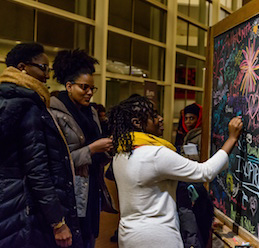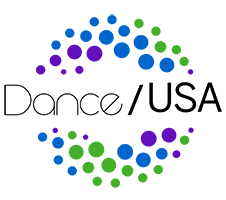Breakfast Download Discussions: UMS
Navigation Menu
- Advocacy Resources
- Artist’s Legacy Toolkit
- Audience Engagement Strategies
- Building Audiences for the Arts: Research and Resources
- Coronavirus Resources
- Dance/USA Fellowships
- Dance/USA Task Force on Dancer Health
- Equitable Contracting Resources
- Funding Resources
- Harassment in the Workplace Resources
- Jobs, Auditions, & Internships
- Key Advocacy Issues
- Music and Choreography Resources
- Mentorship Program: Dance/USA Institute for Leadership Training
- Request a Peer Consultation Letter
- Scheduling Congressional Visits
-
 Organization Name: University Musical Society
Organization Name: University Musical Society
Department Submitting Recipe: Education & Community Engagement
City: Ann Arbor
Program Name: Breakfast Download Discussions
Time of Program: Mid-morning on Sundays
Program Length: 90 Minutes
Goal: To bring together adult audience members after a dance performance to debrief about the performance through simple movement exercises and discussion. The format provides casual social space (with food and drink) that allows audience members to express themselves, hear the opinions of others, and become more comfortable in talking about dance.
Time of Year Offered: Throughout the season for select performances
Program Description:
We host “Breakfast Download Discussions” typically on Sunday mornings after a performance run by a particular company. The intention is to create space for any audience member who has seen a company during the week to join in a facilitated experience that leverages both simple movement exercises and discussion prompts. The experience is co-moderated by two local teaching artists who lead the group through a pre-planned series of activities that guide the group in experimenting with thick description, interpretation, and kinesthetic learning. Typically this is not an artist-focused event, though artists sometimes do participate in the guided activities along with audience members (but it is important that visiting artists understand that the teaching artists are “in charge.”) The facilitation design is such that audience members are encouraged to reflect freely on the performance with other audience members. We moved the program to Sunday morning because, in previous years, we found that hosting debrief sessions immediately after the performances made the entire evening very long and most of our audience members were not willing to commit to a longer evening. The previous iteration of this program (from EDA Round 2) was called “Dance Club.” The “Breakfast Download” concept was an attempt to iterate the “Dance Club” model of facilitated conversation after dance performances.
Number of Participants: As few as 5 and as many as 50 people.
Target Audience: Adult community members who have attended the performance and are seeking out a group for post-show conversation.
Private/Public Public
Nature of Audience Engagement: The audience engages in this program by listening to each other, moving and dancing themselves, asking questions, socializing with other audience members/teaching artists/visiting artists, and eating and drinking. The following is a detailed sample agenda for a typical program: UMS Breakfast Download after Young Jean Lee’s Theater Company’s “Untitled Feminist Show” Detailed Agenda Setup notes and material needs
- 6 “Question Boards” Large Sticky Pad paper
- 6 Sheets of paper with the “Question Board” prompts typed on each table
- 3 Tables, 10 Chairs per Table
- 10 chairs placed around the edges/walls at the far end of the room where we will be moving.
- Markers
- Sticky Notes
- Half the space should be left open/empty for movement exploration activities
- Name Tags As people enter
- music/video is playing
- “Question Boards” are placed throughout the room. These questions will be written on large sticky pad paper. Markers and sticky notes are placed on each table. Individuals will post their responses to these questions on smaller sticky notes. “Questions Board” prompts include:
- One moment that surprised me during the performance…
- The image that resonates with me still….
- The fantasies or thoughts that emerged for me as I watched this work were…
- If my experience was a meal it would taste like…
- The question I want to ask the dance is… 11:00-11:20 Eat and Mingle/ Respond to “Question Boards”
- Teaching artists will explain how to interact with the question boards and continue greeting people as they arrive
- Individuals are encouraged to answer the “question boards” by writing responses on sticky notes at their tables.
- Individuals are encouraged to talk about their answers with their table mates.
- Time for eating and mingling and sticky note writing. Teaching artists will visit each table to facilitate conversations and ask or answer any questions. 11:20-11:30 Formal Welcome/Introduction by UMS Staff. DOORS CLOSE. 11:30-11:50 Name and Gesture Game – Led by Teaching Artists
- Ask participants to recall a gesture from the performance that they remember and present it with their name in the round. The group then responds by saying the person’s name and performing the gesture back.
- In pairs use the gestures to have a movement conversation with another participant. Explore qualitative differences, speed, weight, size, direction.
- Discuss how participants manipulated their gestures and made movement choices based on communication and if specific gestures reflect specific moments of the performance. 11:50-12:15 “Question Boards” and tableaus – Led by Teaching Artists
- Participants will be asked to gather around one of the “question boards” that interests, confuses, or appeals to them. These self-formed groups will investigate the question and sticky note responses through movement creating tableaus or vignettes.
- Each “Question Board” Group will share their embodied response and talk about how their movement choices reflect their experience of the performance. 12:15-12:25 Audience Conversation – Led by Teaching Artists
- Audience members gather in a circle of chairs for casual conversation (the strategy is to come to discussion last after having used both quick response and movement as a form of dialogue). If visiting artists are present, they are invited to join the conversation and, naturally, this will lead to a bit of artist Q&A. 12:25-12:30 Wrap-Up/ Thank you’s/ Announcements about upcoming events Notes and Reminders
- Choreograph the transitions, direct the participants in clear specific instructions when moving from tables to standing activities.
- Create an environment of participation, no bystanders. Late arrivals, quietly ushered into current activity by staff.
- During Q & A encourage questions/comments from lots of different participants by name (Nametags will help with this). Don’t let one participant monopolize the time.
Location: In a large meeting room adjacent to the venue. The room should be flexible with movable tables and chairs. The room should be set up to allow for tables and chairs on one end and open movement space on the other. It’s most optimal to have a room with a wood, marley, or tile floor to allow for easy movement.
How Many Staff: Typically we have 1 administrative staff person managing logistics (sign-in, catering, room setup), 2 teaching artists who act as co-moderators and assist in setting up the room for their activities, and 1 student volunteer to assist the administrative staff person.
Program Cost: We provide an honorarium for each of our teaching artists ($250 per artist), catering (bagels, donuts, coffee, and fruit for 30 from Panera at about $800-$1,000 per event), and we have an in-kind rental agreement for space (valued at about $600 per event).
Marketing for Program: We promote the event in our season brochure at the beginning of the year, and then subsequently in all marketing channels (social media, website, email marketing, pre/post-show emails to ticket buyers, postcards, monthly calendars, within the program book, and in print and online advertising). Occasionally we will do targeted marketing to specific community groups that might have a unique interest in a particular artist.
Cost for Program Participants: Free and open to the public.
Attendance To Date: 20
Past Iterations: We held 4 Downloads in the 2015-2016 season.
What works? We believe that we devised a really successful and engaging facilitation model. The model combines quick response, thick description, kinesthetic exploration, and discussion in ways that are accessible and inviting to a general audience. We have honed this model through a number of different programs (including “Night School” and “Dance Club” which can be found elsewhere in the EDA Cookbook). Key to our model is using discussion as an endpoint, rather than a starting point. We almost always begin with movement and work towards discussion. We have found (sometimes surprisingly) that given a supportive and non-judgemental environment general audience members are very willing to engage in simple movement exercises, and, over time, facilitators can move audience members towards more complex movement (tableaux or moving across a room). We have also been impressed by how audience members are able to remember, recall, and reproduce movements from dance productions (even our visiting artists have been impressed). This recall and reproducing of gestures from the performance are excellent ways of remembering and reflecting on the performance that don’t come through discussion alone.
What doesn’t work? We struggled with participation on Sunday mornings. We found that audience members in our community don’t want to join an activity on Sunday morning. Perhaps this is understandable given that Sunday mornings are typically quiet time for families and others, and that many attend church or other kinds of gatherings on Sundays. Though we believe in our facilitation model and the quality of the experience for participants, it was, simply, very hard to recruit participants despite our best efforts. Not to mention, too, that Sunday mornings are also hard on staff who typically work most evenings and weekends throughout the season.
Performances Where Offered: We did not offer this program for all dance performances. We offered this program only for companies who presented shows on the weekend and usually shows with multiple nights so that we could leverage participation on Sunday morning.
Past Research on Program: Given the low participation in this particular program, we did not conduct formal research on this iteration. We have done research in the past on “Night School” and “Dance Club” using the “Intrinsic Impact Survey” created by WolfBrown. This survey tool can be licensed by arts organizations for a nominal fee to conduct audience research. You can see the results of that research in the EDA Cookbook entries for “Night School” and “Dance Club.”
Continuing Program? Though we believe in the quality of the experience, we will not be continuing the program in the future due to low attendance.
